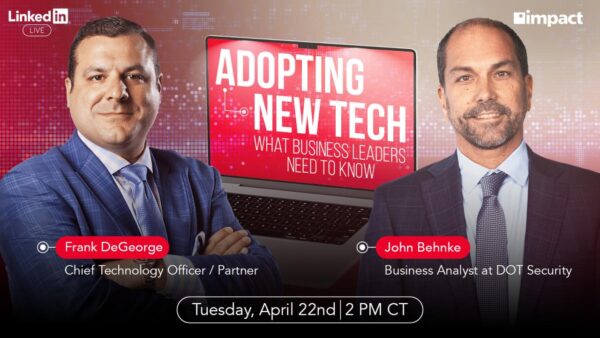HP’s annual global partner conference prepares partners for what’s next.
(Pictured above: HP, Inc. President & CEO Dion Weisler opens the conference with a compelling look into the future.)
Curious about what the future looks like and how technology companies are preparing for it? If you were at HP Reinvent, the company’s global partner conference, you’d have a good idea. The conference, held in Houston on March 19, offered strategic insights into the company’s products, solutions, services, and its go-to-market strategies, but more notably its vision of the future. We heard about 3D printing, textile printing, security, sustainability, smart technology, digital transformation, A3 and A4, service initiatives and more. But more than anything the conference was focused on emerging trends and the impact those trends will have on HP and its global partners. All of this was presented in a single day.
I don’t attend many conferences that wow me. Most accomplish what they set out to do, but after 30 years or so attending these events, it’s mostly familiar territory even when done well. However, the emphasis on trends was enlightening and thought provoking and book ended with observations from HP executives about how those trends are impacting HP’s current and future products, solutions, and services.
Here’s what I consider the most interesting highlights of HP Reinvent.
The big picture was presented to a big audience. There were some 1,400 global partners from more than 90 countries in attendance. According to HP, Inc. President & CEO Dion Weisler, the company has spent more than 1.6 million hours with its partner community this year alone. We learned that close to 90% of HP’s business goes through its channel partners. Last year HP’s commercial and consumer channels grew revenues in double digits with Weisler pointing out that was more than $6.5 billion in new revenue in one year alone. “Our channel growth was bigger than the total revenue of many Fortune 500 companies,” he said. And since 2016, HP’s channel has grown by more than $10 billion.
Supplies side economics. Weisler noted during his opening address that he wasn’t happy with the way HP started the year, particularly in supplies where net revenue was down 3% for the first quarter of 2019. He told the audience that the company needs to get that business back on track and that the company will take clear and decisive action to course correct as needed. “It was a valuable wakeup call for our teams and a clear indicator that we must transform ourselves faster,” stated Weisler.
Rapid change. “Breakthrough technologies used to come around once or twice in a generation,” observed Weisler. “Now powered by the rise of urbanization, digitization, and hyper globalization, earth shattering innovations happen every single day.” He pointed out that more data is produced in a year than the previous 5,000 years of human history combined while also noting that people are rapidly moving into cities””4.5 million every month. These trends are changing the needs of HP’s customers. “They’ll be looking for smaller, smarter, and more convenient and sustainable solutions,” said Weisler.
Emerging markets and a changing workforce. According to Weisler, 55% of the global workforce next year will be millennials and close to 90% of those will live in emerging economies. He added that there are more millennials in China than people of any age in the Americas while also acknowledging the emergence of Gen Z, who he said will have a whole new set of rules around how they work and play. This group, he informed the audience is passionate about the environment, passionate about social justice, and passionate about using technology to make life better for everyone everywhere.
The digital transformation. As digital transformation accelerates, new technologies and business models are popping up everywhere. By 2022 more than 60% of global GDP is expected to be digitized. To fuel this, Weisler reported that the market research firm IDC predicts more than $7 trillion in IT-related spending over the next three years. “Businesses across industries are disrupting themselves and expanding their playing field,” said Weisler. “That’s exactly what we need to do for our customers. There’s more opportunity to do this than ever before.” Adding that there are more than twice as many devices connected to the internet than people in the world, underscored the concept of a digital transformation. Expect this transformation to accelerate even faster with the emergence of 5G networks, which Weisler said will make everything in our lives smarter, faster, and more connected.
Sustainability and fighting climate change. Sustainability is a major HP initiative and Weisler told the company’s partners it’s on us to help mitigate the risks facing our climate and our planet. He cited the World Economic Forum Global Risk Report, which ranked environmental threats at the top of its lists of risks for the third straight year. “Taking action isn’t nice to do, it’s a business imperative,” said Weisler. “Study after study shows that companies can deeply integrate sustainable impact into their businesses and outperform those who don’t.” Each year HP’s Board of Directors meets with its largest investors, and Weisler reported that these topics come up in every meeting. “These investors want to make sure our company is leading in these areas,” he said while adding that HP has seen a 38% increase in deals where sustainability was a key differentiator, leading to $700 million in new revenue. “This is what innovation is all about, finding solutions that benefit our business and society as a whole,” stated Weisler.
3D printing, a component of the fourth industrial revolution. This event offered the greatest emphasis on 3D printing of any conference I’ve ever attended. HP executives spoke about the company’s 3D printers for prototyping and manufacturing, but more importantly we heard how HP is firmly committed to 3D print technology and that it envisions this technology playing a major role in prototyping and manufacturing in the future. While attending a recent World Economic Forum, Weisler reported that CEOs across all industries see advanced manufacturing and 3D printing as catalysts for transforming and disrupting their own businesses. “As this new world takes shape, production will be democratized, personalized, and connected like never before,” said Weisler.
Transactional to contractual. Ready or not, HP see its partner’s businesses transforming from a transactional to a contractual model. “When we talk about where we’re going, what opportunities we will see, transforming all of our businesses into a service model is going to be critical,” said Enrique Lores, president, imaging, printing, and solutions, HP, Inc. “While we keep our foot on the pedal to build our core, we need to shift more of our business to contractual models,” he emphasized. “That’s where a large portion of future channel growth resides.” Going forward expect to hear more about DaaS (Device as a Service) and of course XaaS (Everything as a Service).
Let’s get personal. HP also envisions a world of greater personalization. “All of us want to be different. All of us want to be close in a different way, in a personalized way,” said Lores while adding that many companies are starting to take advantage of that. “They have realized that if they have a personalized label, a personalized package, they can access new consumers, they can connect to their customers in different ways.” With digital printing, Lores said that HP is enabling this transformation and enabling these connections.
A sense of security. What’s an HP event without a discussion about security? Weisler noted in his opening address that a more connected world is a more vulnerable world. “There will be 10,000 new malware attacks during the span of my talk this morning,” he said. “That’s why global spending on security solutions is expected to grow double digits annually and reach $120 billion by 2021.” During the conference, HP introduced HP Sure Sense technology for its PCs, which leverages artificial intelligence to identify known and unknown malware. According to Alex Cho, president, personal systems, HP, Inc., this software can stop 99% of malware attacks in less than 20 milliseconds. He also revealed that HP DaaS is getting a significant update with proactive security services, describing it as security delivered as a service. While those security offerings are for the company’s PC’s, it’s not a stretch to imagine those concepts expanding beyond that product segment. Meanwhile, Lores reiterated HP’s claim of having the most secure printers on the planet, noting that it is the only company that offers its partners cybersecurity certification and security training as well as being the only company that pays hackers to identify weaknesses in its systems so HP can make its printers more secure.
Access Related Content
Visit the www.thecannatareport.com. To become a subscriber, visit www.thecannatareport.com/register or contact cjcannata@cannatareport.com directly. Bulk subscription rates are also available.




